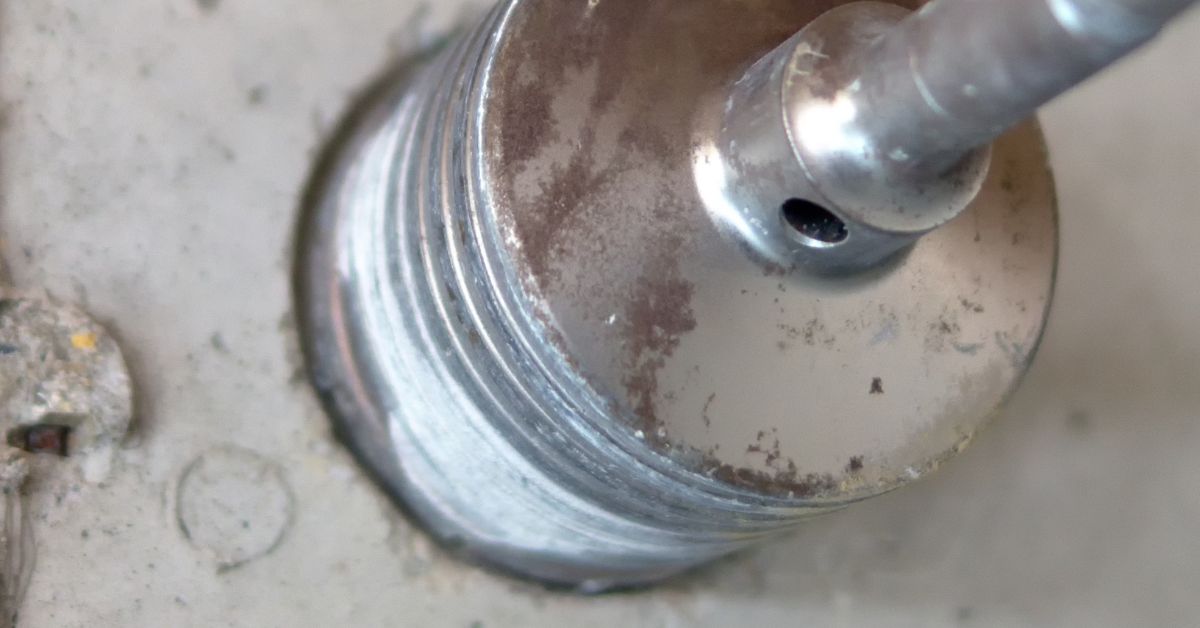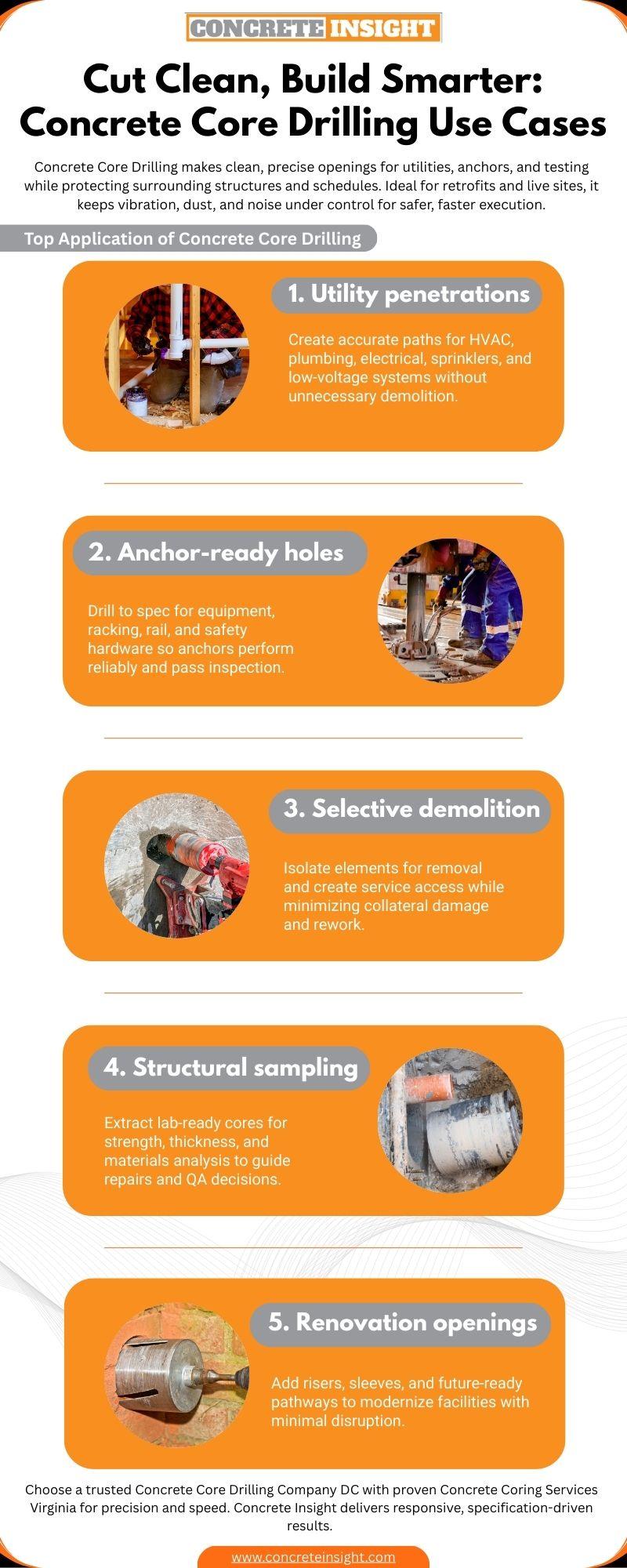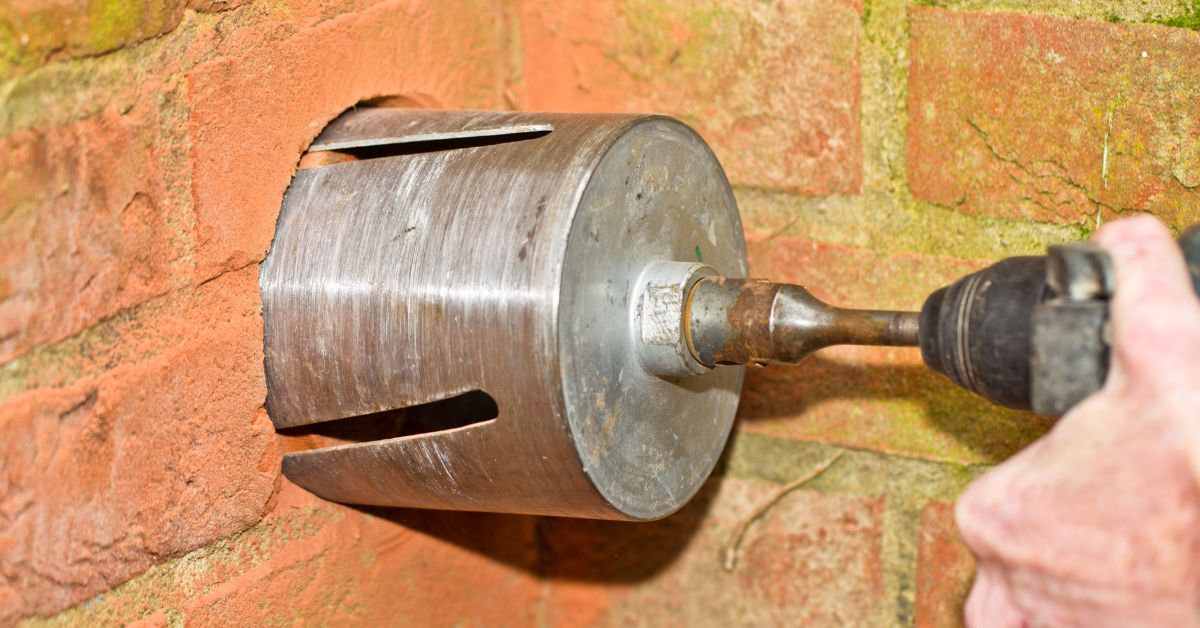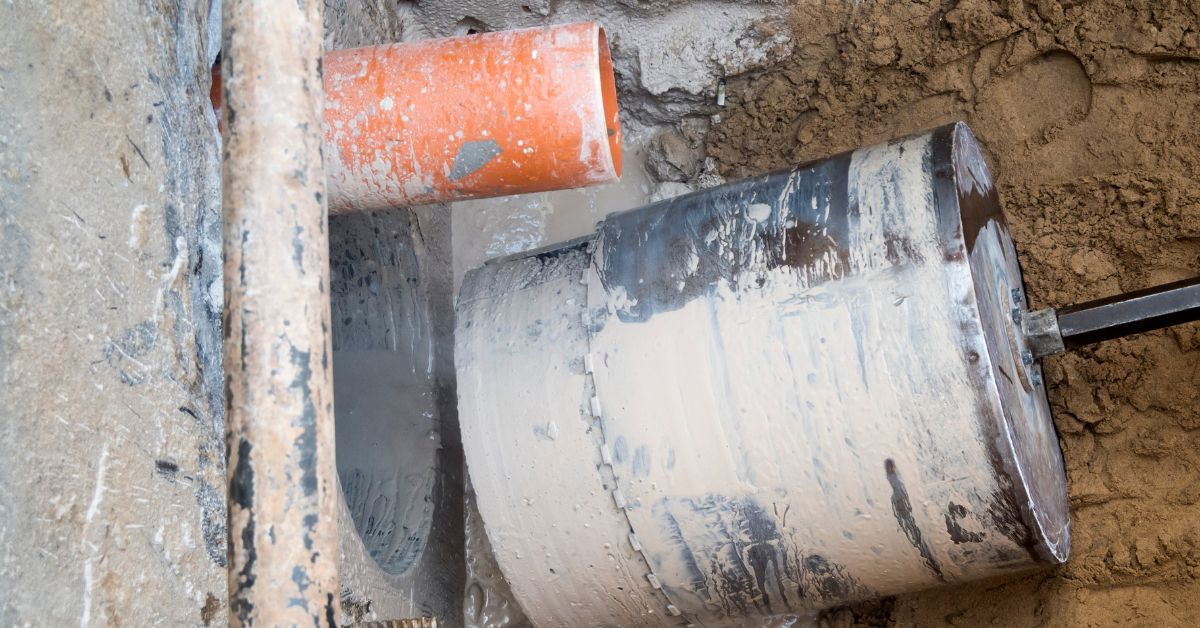Concrete Core Drilling is the clean, precise way to create cylindrical openings in concrete, masonry, or asphalt without compromising surrounding materials or schedules. It enables utility penetrations, anchor installations, and sampling for testing while keeping vibration, dust, and noise in check. This approach is favored on live sites and sensitive facilities where careful execution matters.
Why Concrete Core Drilling Matters

Concrete Core Drilling delivers repeatable accuracy that helps trades hit exact diameters, locations, and angles for sleeves, conduits, and pipework. The process uses diamond tooling and controlled feed rates to protect adjacent finishes and reduce rework. Compared to impact methods, it preserves structural integrity, which is critical for warranty, inspections, and lifecycle performance.
Key Advantages:
- Precise holes with clean edges that support reliable anchors and watertight sleeves.
- Minimal vibration and lower noise for occupied buildings and historical structures.
- Faster penetrations and less cleanup, improving productivity across trades.
- Compatible with reinforced sections, tight spaces, and angled or horizontal runs.
- Safer work zones with effective dust suppression and slurry management when drilling wet.
Signs It Is Time to Hire a Specialist
Choosing a professional service is smart when tolerances are tight or conditions are complex. Consider bringing in expertise if any of the following applies:- Utility Coordination: Exact penetrations are required for plumbing, fire protection, electrical, data, or HVAC.
- Structural Sampling: Cores are needed for lab testing, QA, or forensic assessment.
- Occupied or Sensitive Spaces: Hospitals, schools, offices, or historic sites demand low-disruption methods.
- Congested Reinforcement: Heavy steel, PT cables, or embeds require advanced bit selection and staging.
- Confined or Elevated Access: Specialized rigs and safety controls are essential for safe production.
Understanding Applications and pricing factors
Common Use Cases of Concrete Core Drilling
Concrete Core Drilling supports many build and retrofit priorities:
- Utility penetrations for HVAC, plumbing, electrical, sprinkler lines, and low-voltage systems.
- Anchor bolt hole drilling in reinforced concrete to secure equipment, racking, rail, or safety hardware.
- Selective demolition and service access to isolate elements without collateral damage.
- Core sampling for structural assessment, thickness verification, and materials analysis.
- Openings during renovations to add risers, sleeves, or future-ready pathways.

What Influences Concrete Core Drilling Cost
Budgets vary by technical and logistical complexity. Expect pricing to reflect:
- Diameter and Depth: Larger or deeper holes require more time, torque, and water management.
- Reinforcement: Dense rebar cages or PT zones affect bit wear, feed rates, and staging.
- Access and Layout: Horizontal or overhead coring, confined spaces, or lift work increase setup and safety controls.
- Occupancy Constraints: After-hours work, noise limits, and enhanced protection add labor and coordination.
- Quantity and Sequencing: Batch drilling across aligned trades reduces mobilizations and speeds inspections.
Practical Planning Tips for Core Drilling Services

- Coordinate penetrations early with MEP to avoid clashes and avoidable offsets.
- Use clear offsets from gridlines or finished surfaces for layout accuracy.
- Stage wet vacs, slurry containment, and protection to accelerate cleanup.
- Confirm patching, firestopping, and inspection steps before coring starts.
- Align deliveries so sleeves, anchors, and embeds arrive before core completion.
Conclusion
Concrete Core Drilling enables accurate openings, dependable anchors, and lab-ready samples while protecting structures, schedules, and budgets. For capital projects in the Mid-Atlantic, Concrete Insight offers responsive, specification-driven delivery and integrates seamlessly with trade coordination and building constraints.
As a trusted Concrete Core Drilling Company DC with strong regional reach through Concrete Coring Services Virginia, we adapt to live environments, meet documentation needs, and mobilize efficiently across programs. Teams comparing Core Drilling MD and Core Drilling VA options will find that Concrete Insight prioritizes precision, safety, and schedule certainty while keeping communication clear from first layout to final patching.
FAQs
1. What is the difference between Core Drilling and impact drilling?
Core Drilling removes a clean cylindrical plug using diamond tooling, which limits vibration and noise, whereas impact drilling fractures material and increases the risk of spalling and micro-cracks.
2. How deep can Concrete Core Drilling go?
Depth is primarily constrained by rig capacity, bit length, power source, and access, with specialty setups capable of significant depths in reinforced elements when staged correctly.
3. Is Concrete Core Drilling suitable for live, occupied buildings?
Yes. With wet methods, proper containment, and well-planned sequencing, it maintains comfort, cleanliness, and safety with minimal disruption to occupants and operations.


Comments